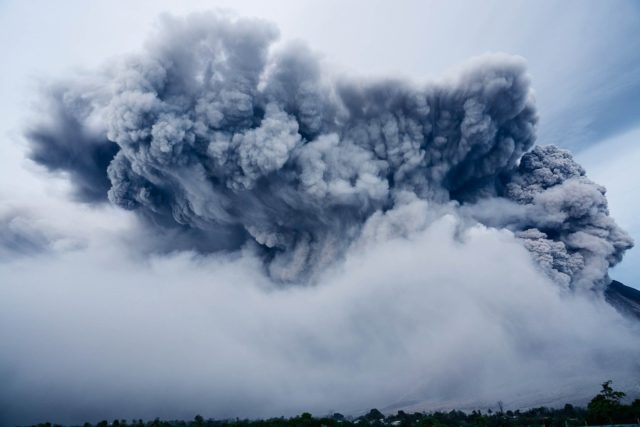Research to develop instrumentation and to develop models relevant to the dispersal of volcanic ash played a key role in establishing the requirement for a flight ban during the eruption of the Icelandic volcano, Eyjafjallajökull, in April 2010 but also in the adoption of a flexible approach to its staged lifting as the emergency continued. This led to new procedures being put in place across Europe which minimised the economic costs and human inconvenience caused by such eruptions without unacceptable risks to passengers and crew.
Prior to the Eyjafjallajökull volcanic eruption on 14 April 2010, researchers at the University of Reading had developed a range of sensors and data acquisition system for weather balloons, to study cloud and dust electrification. This technology was then used to collect data on the properties of the volcanic ash cloud. Following the eruption of Eyjafjallajökull, the research team was asked to urgently give expert guidance on the size, location and make-up of volcanic ash clouds over UK airspace.
The Eyjafjallajökull eruption resulted in a large ash plume covering the UK and Europe. This caused safety concerns over the use of aircraft in UK airspace, as volcanic ash can seriously damage aircraft engines, and a flight-ban was enforced from 15 April.
The Cabinet Office requested the help of the research team and their instrumentation for sampling the volcanic ash plume during the early phase of the flight ban. As well as providing key information for decision making by the aviation industry at the time, the data were then made more widely available for use by a range of organisations and individuals through publication in the first open access peer-reviewed paper following the eruption.
The Met Office’s NAME model (Numerical Atmospheric dispersion Modelling Environment) was being used to provide information about the plume. The Met Office requested assistance to perform detailed analysis of the model output during the crisis, and so another strand of research focussed on analysing the output of the model alongside different measurements taken of the plume from a range of sources.
Impact
The measurements taken using the dust-monitoring technology developed by the research team helped to immediately support and validate the data derived from the NAME model and map the ash cloud. During the initial phase of the Eyjafjallajökull eruption, the measurements provided by the instrumentation confirmed that, under the ‘zero risk’ procedure in force at that time, a flight ban should remain in place.
Other research on the NAME model itself compared the predictions from the model to many actual observations made at the time. Further research by the team also developed a methodology to enable the model to come up with a realistic quantitative forecast. This enabled NAME to provide a forecast which was able to give concentrations of volcanic ash.
The impact of this was that the NAME predicted maps were able to be divided into three zone types (depending on the degree of contamination), and in this way, flight bans could be restricted to smaller regions as the eruption progressed. On 20 April 2010, there was a partial reopening of European airspace, and by 22 April, eight days after the eruption had begun, regular flight schedules resumed. Financially, this meant that losses by the airline industry were reduced during the latter days of the eruption.
42,600 flights were cancelled on the first three days of the Eyjafjallajökull crisis. However, for the subsequent Grímsvötn eruption in May 2011, there was a much reduced impact on aviation, with only 900 flights were cancelled in the corresponding interval. The research effort described here contributed to this, by enabling the accurate assessment of air space hazard.
Funding
The dust monitoring equipment which was developed for the radiosonde balloon flights was developed using NERC funding. NCAS (Natural Centre for Atmospheric Science) provided the funding for the research on the NAME model following the eruption.
Research led by Professor Giles Harrison and Dr Helen Dacre
First published: June 2015
Download the full case study

